|
Retro Homebrew & Console News is a site that has the latest Retro Homebrew News, DCEmu Hosted Coder Releases, Interviews, History and Tutorials, Part of the
DCEmu Homebrew & Gaming Network.
THE LATEST NEWS BELOW
|
February 14th, 2013, 15:25 Posted By: wraggster
via http://www.romhacking.net/
Biomotor Unitron 2 - SKikouseki Unitron was released in Japan in 2000. After SNK’s bankruptcy the title failed to reach its way over stateside. With a little luck we’ll have a complete package ready for your enjoyment within the coming months. The game gives you everything you wished the 1st Unitron title did. For example, choosing a specific partner gives you a completely different Unitron to use, instead of being stuck with just one and modifying it from there.
I will be going slight graphical overhauls of the intro and the attributes or affinities (per Biomotor 1), to display as fire, ground, tree, water, light, darkness etc.
Except a lot of awesomeness coming down the line very soon from Wynd productions. Ha!
http://www.romhacking.net/translations/1793/
To read more of the post and Download, click here!
 Join In and Discuss Here Join In and Discuss Here
Submit News and Releases Here and Contact Us for Reviews and Advertising Here |
|
 |
|
|
|
February 11th, 2013, 21:39 Posted By: wraggster
PC giant Nvidia is on the hunt for a supplier to release its new games console into the UK.
The firm, best known for its graphics cards, revealed Project Shield at the Consumer Electronics Show in Las Vegas last month. The portable plays Android titles and can even stream games from the PC.
Developers are already on-board with games optimised for Shield, including Bohemia Interactive, which has made an Arma title for the product.
But although the console is due to launch in the US and Canada in Q2, it has yet to secure a UK supplier and is open to offers.
“We want to sprint to get it into the key markets in Europe and Asia,” said Nvidia’s director of product marketing Jason Paul.
“Since the announcement we’ve had people knocking on our door. So there’s interest in distributing the product. Shield is targeting Android and PC gamers, so we are looking for people who can sell into that market.”
Nvidia developed the graphics chip in PS3, but is now taking its own steps into hardware development. And Paul was delighted by the press response.
“We thought that Project Shield would raise the bar for Android and PC gaming,” he added. “When we looked at the complexity of the device, with all the streaming tech, we came to the conclusion that we had a device that only we could build ourselves. It is a natural step for us.
“The response has been overwhelming. We won over 30 best of show awards at CES. The amount of new coverage we received was more than anything we have ever had before.”
http://www.mcvuk.com/news/read/uk-di...onsole/0110702
To read more of the post and Download, click here!
 Join In and Discuss Here Join In and Discuss Here
Submit News and Releases Here and Contact Us for Reviews and Advertising Here |
|
 |
|
|
|
February 11th, 2013, 21:37 Posted By: wraggster
 It is rare indeed for a single game to become the progenitor of an entire new genre. Although it had its precedents, with some fans attempting to retcon a gaggle of faintly similar 8bit titles for the role, the world’s first realtime strategy game can be named with little real controversy.But going back to Dune II today is an eye-opening experience, as it becomes clear how very little the genre has moved forwards – like finding out Halo had really been released in 1982. The same basic viewpoint, interface, controls and gameplay underpinning Dune II are still being reused today, with only the most minimal level of evolutionary advancement.Lacking any of the hexes or grid squares of contemporary turn-based strategies, Dune II was loosely based upon the David Lynch movie, at least in terms of visual design. The gameplay featured three different factions (one invented for the game) all with individual structures, units and superweapons. It is rare indeed for a single game to become the progenitor of an entire new genre. Although it had its precedents, with some fans attempting to retcon a gaggle of faintly similar 8bit titles for the role, the world’s first realtime strategy game can be named with little real controversy.But going back to Dune II today is an eye-opening experience, as it becomes clear how very little the genre has moved forwards – like finding out Halo had really been released in 1982. The same basic viewpoint, interface, controls and gameplay underpinning Dune II are still being reused today, with only the most minimal level of evolutionary advancement.Lacking any of the hexes or grid squares of contemporary turn-based strategies, Dune II was loosely based upon the David Lynch movie, at least in terms of visual design. The gameplay featured three different factions (one invented for the game) all with individual structures, units and superweapons.
Although it is hard to appreciate now, being able to control each directly with the mouse – simply by pointing and clicking wherever you want them to move to or attack – was revolutionary. As was the need to harvest spice to act as the resource that feeds the expansion of your army.“The inspiration for Dune II was partly from Populous, partly from my work on Eye Of The Beholder and the final and perhaps most crucial part came from an argument I once had with Chuck Kroegel, then vice president of Strategic Simulations Inc,” recalls Westwood Studios co-founder and Dune II producer Brett Sperry.“The crux of my argument with Chuck was that wargames sucked because of a lack of innovation and poor design. Chuck felt the category was in a long, slow decline, because the players were moving to more exciting genres,” he explains.“I felt that the genre had a lot of potential – the surface was barely scratched as far as I as concerned, especially from a design standpoint. So I took it as a personal challenge and figured how to harness realtime dynamics with great game controls into a fast-paced wargame.”Technosoft’s 1990 Mega Drive game Herzog Zwei is often labelled as a primary inspiration for Dune II, but according to Sperry greater influence came from a more mundane source. “Herzog Zwei was a lot of fun, but I have to say the other inspiration for Dune II was the Mac software interface. The whole design/interface dynamics of mouse clicking and selecting desktop items got me thinking, ‘Why not allow the same inside the game environment? Why not a context-sensitive playfield? To hell with all these hot keys, to hell with keyboard as the primary means of manipulating the game!’”The influence of MacOS (at the time the text interface of MS-DOS still held equal ground with Windows on PCs) on Sperry is perhaps unsurprising given his initial game industry experience as an Apple II programmer. “I started programming in high school when I was 16 years old and initially I did ports to the Apple II, some utilities and six ‘edu-games’. My first big game was called Terra 12 but it was never published. Around 1984 I met Louis Castle during a port of Impossible Mission for the Apple II that I was working on. Louis did most of the art and animation on that project. In fact, after seeing his superior artwork, that was the end of my computer art career!”“Louis and I started Westwood Studios in March of 1985 as a 16bit game company. Our early games were for the Amiga and the Atari ST. We were a three-man shop initially [with programmer Barry Green]. Louis did all the artwork, all three of us were programming, and each of us did some of the audio work.”Sperry stopped programming in 1987, though, as the demands of design work, running the new company and overseeing production on all of Westwood’s games was all becoming too much. “With the rise of the 16bit machines, the rules and standards changed dramatically. We actually had to hire two artists and an audio guy. Almost overnight the industry went from one and two-man teams, to groups of five or six.”Apart from proving that some things in the game industry never change, Sperry also recalls that by the same period he was getting bored with programming: “For me, game conceptualisation and design was the hardest and the most exciting job of all, and I was jealous of any time I spent away from doing that.”Conceptualisation of Dune II itself began with an approach from Martin Alper, president of Virgin Games. “Martin asked what I thought about Frank Herbert’s Dune books and the Dune movie,” remembers Sperry. “I loved the books and I loved David Lynch’s movie as well, and I told him as much. Martin told me he had locked up the licence years ago and I could use it if I wished.”Alper’s comments to Sperry had been made with the understanding that work by French developer Cryo on a Dune-themed adventure/strategy hybrid had already been cancelled. As Sperry later found out, however, Cryo hadn’t taken no for an answer. “They rushed to finish their game before ours,” he reveals. “The result was a branding nightmare – the Cryo game had nothing to do with ours and yet it was published first because Virgin was anxious for the revenue. Against my violent protests our game was called Dune II: The Building Of A Dynasty [Battle For Arrakis in Europe and for the Mega Drive version] and the rest is history.”Initial development was hardly any less problematic, as Sperry recounts: “Joe Bostic was my lead programmer, and I remember telling him about how I wanted the units to move around on the battlefield and the basics of combat. And so he put it all together, and the resultant game was really boring!”At this stage, though, the game bore little resemblance to the final product, with only four to eight units fighting on each side. “When we played with it, the whole game was over in no time. So we worked in obstacles on the battlefield and later production dynamics, the base and unit construction, and the fog of war effect. The production dynamics were partly inspired by Civilization. Sid [Meier]’s production dynamics gave me ideas on how to make Dune II more interesting.”According to Sperry there was no fleshed-out game design and development was largely organic. “I wasn’t very good at communicating what I saw in my mind,” he admits. “I knew how I wanted the controls and interface to work very clearly, but some of the unit dynamics and pacing were still murky. So we basically built the game iteratively and the design documents were often made up as we went along.”This open-ended approach to game design is clearly how Sperry prefers to work, admitting that today he spends more time as a voyeur than a player. “When I focus on watching others play, I learn more about game design and entertainment, what’s working, what’s frustrating and how much or little players are willing to put up with and why. Game design and gamer interaction is still a source of endless fascination for me.”Sperry describes Dune II’s core challenge as “combining combat, exploration and production at a particular pace and rhythm to make it all exciting and almost out of control. That was a key part of what made it so addictive.” Indeed, the experience was quite unlike more staid turnbased strategies, where success or failure rolled in slowly rather than rushing over sand dunes at the speed of an action game.“You had to think and respond fairly quickly, and in realtime, or else your base and forces would all be overrun. And as we developed the game further, it became clearer how the pacing and battle scenario design were all a delicate balance.”In spite of concern over the obscure title the game was an immediate hit when released in 1992. “We called Dune II a ‘realtime strategy’ game – we did that to make it clear to software retailers and users that we had something new,” says Sperry, who seems to have been afforded the rare chance to not only create a new genre but to name it as well. “But it was a wargame at heart. You built and managed units and took out the other side. Once people tried the game, they were hooked, and soon Dune II was a huge commercial success.”As work on the game came to a close, Sperry was working on its successor: “I was evolving my designs and figuring out how to streamline the interface even more. I had developed a new game and mythos with a modern-day setting, and that’s how Command & Conquer was born.”Although Dune II earned itself two sequels – a remake in 1998 named Dune 2000 and the more favourably received sequel Emperor: Battle For Dune in 2001 – it is the Command & Conquer series that is the game’s true legacy. The series is still the most successful realtime strategy franchise today and its debt to Westwood’s original games is immediately obvious.Sperry has little to offer in support of subsequent entries in the genre, though. “The few wargames I’ve played lately have left me uninspired,” he admits. “I don’t really recognise the realtime strategy genre as such on consoles.”“That said, gaming today is still fun and exciting to me personally. I play World Of Warcraft with some friends on a PvP server. I thoroughly enjoyed BioShock and I still play Mario Kart from time to time. Mostly social games and multiplayer games are what appeal to me. The quality of games is still a mixed bag despite all the new technology. But hasn’t it always been like this? In music, literature and film we see the same thing – lots on offer, but a pretty small number of exciting gems each year. And I can assure you that, like other entertainments, every game project starts out as something new and exciting in its creator’s minds. But without a great design, critical feedback and a solid team, it’s still a dicey outcome.”
http://www.edge-online.com/features/...ng-of-dune-ii/
To read more of the post and Download, click here!
 Join In and Discuss Here Join In and Discuss Here
Submit News and Releases Here and Contact Us for Reviews and Advertising Here |
|
 |
|
|
|
February 8th, 2013, 22:54 Posted By: wraggster
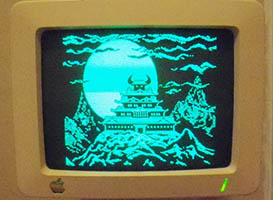
One of the most commonly frustrating things about having an old Apple ][ lying around in your basement or attic is the lack of software. While at one time in the late 80s you may have had your own copy of Oregon Trail, that disk is either lost or non-functional, and it's pretty hard to get new disk images onto 5 1/4" disks.
To solve this problem for himself, [Eric] came up with an Apple disk emulator. A project like this has been done many, many times over the last few decades, but [Eric] put his own twist on it: he doesn’t use a microcontroller. Instead, he used a simple USB FTDI device to talk to the Apple disk drive.
The FTDI device in question is a UM232H chip that takes a USB connection and turns it into an SPI bus. Of course the Apple ][ disk doesn't speak SPI, so [Eric] needed to do a little logic conversion with a 74LS251 multiplexer and a 74LS161 counter.
In the video after the break, you can see [Eric] loading Apple disk images on a IIc from his new Intel Mac. It’s a neat build, but it’s not done yet: [Eric] plans on adding a microcontroller with an SD card, allowing just about every Apple ][ game every made to fit in your pocket. Yes, [Eric]‘s project is quite similar to the A][ pocket serial host we saw just a bit ago, but this will hopefully have a lower component count.
http://hackaday.com/2013/02/07/usb-apple-disk-emulator/
To read more of the post and Download, click here!
 Join In and Discuss Here Join In and Discuss Here
Submit News and Releases Here and Contact Us for Reviews and Advertising Here |
|
 |
|
|
|
February 5th, 2013, 22:38 Posted By: wraggster
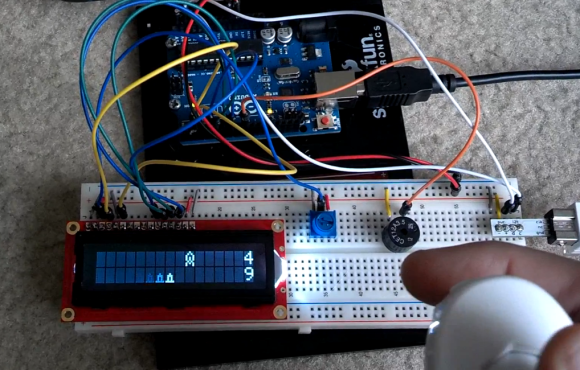
This Space Invaders game does more with less. [Rjk79] managed to make a video game using a two-line character display. The game consists of a wave of invaders on the top line, with the defender cannon on the bottom. The invader isn’t just stationary, but randomly moves to the left and the right. The image above captured a little bit of motion blur from the defender moving into position before firing on the enemy.
An Arduino board controls the 16×2 HD44780 character display. The game also includes sounds generated by the piezo buzzer seen on the breadboard. All the way to the right you can see the Wii Nunchuk breakout board which provides directional control and the firing trigger. If you want to recreate this one for yourself [Rjk79] is sharing the source code on Pastebin. There’s also a demo video found after the jump.
If you don’t have a character LCD on hand you might try this other Space Invaders clone that uses an 8×8 led matrix.
http://hackaday.com/2013/02/04/space...acter-display/
To read more of the post and Download, click here!
 Join In and Discuss Here Join In and Discuss Here
Submit News and Releases Here and Contact Us for Reviews and Advertising Here |
|
 |
|
|
|
February 5th, 2013, 22:37 Posted By: wraggster
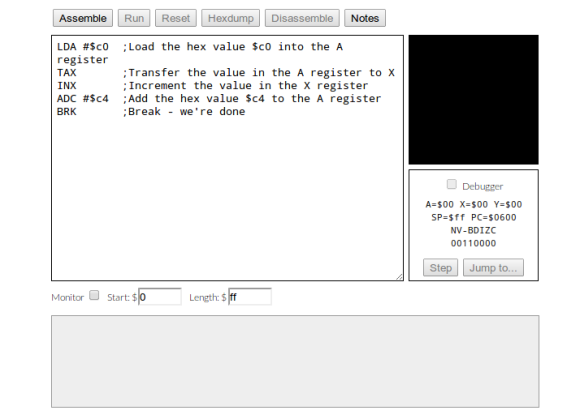
Evern wanted to write your own Atari 2600 games? This won’t get you quite that far, but it will teach you the very basics. It’s an assembly tutorial for the 6502 processor. The nice thing is that you need nothing more than your browser to participate thanks to the embedded JavaScript emulator which acts as assembler, machine, and debugger in one.
The 6502 was in a lot of early equipment. In addition to the previously mentioned Atari they can be found in the Commodore 64, Apple II, and the original NES. You can even find folks building their own computers around the chip these days (most notable to us is the Veronica project). The guide starts off slowly, providing a working program and challenging the reader to play with to code in order to alter the outcomes. It moves on to an overview of registers and instructions, operators and branching, and culminates in the creation of a simple game.
http://hackaday.com/2013/02/05/learn...502-processor/
To read more of the post and Download, click here!
 Join In and Discuss Here Join In and Discuss Here
Submit News and Releases Here and Contact Us for Reviews and Advertising Here |
|
 |
|
|
|
January 30th, 2013, 23:50 Posted By: wraggster
There are few games that will ever have as much impact on the games industry as Doom. Two decades after release it remains a touchstone for the genre, and has influenced a whole generation of designers; the shooter that defined a thousand shooters.For all that impact and import though, Doom is nothing like it was initially intended to be. Tom Hall's original design document suggests a wholly different game than the one eventually released - a game that may have left behind a far greater legacy had it ever been achieved. Doom's original design called for four players on a quest to rescue their friend Doom's original design called for four players on a quest to rescue their friend
"Doom takes up to four players through a futuristic world," explains Hall's summary. "They may cooperate or compete to push back the invading hordes... [and] the environment is one big world, just like real life."Continuing, the design document sketches an outline of a game that's closer to Left 4 Dead than the actual Doom - a co-op romp through a realistic military base filled with undead and devoid of lava traps or acid pits. There was even a proper story too; one set to span six episodes and with a far deeper narrative than Id had ever tried before - or arguably since."You are a soldier in the UAAF (United Aerospace Armed Forces) assigned to the military research base on the darkside of the giant moon Tei Tenga," reads a draft press release - and already there are significant differences. In the finished game the UAAF is changed to the UAC and, while the name Tei Tenga still appears on computer readouts, Doom is actually set on Mars' moons."You and four friends are having a game of cards in the hangar bay," Hall writes, describing the opening cut-scene Doom never had. "Meanwhile, the research team are doing experiments at the anomalies found on the moon. There is a flash of horrible light and two gates open at equidistant points on the moon's surface... Every awake [sic] is quickly killed. One reaching for the alarm button has his hand chopped off!"Granted, the occasionally broken English doesn't do the proposed storyline any favours - especially when characters have names such as Janella Sabando and Petro Pietrovich - but it's better than nothing. Between the episode-by-episode summaries and the brief character bios there's enough to provide a flavour of the Doom-that-might-have-been. Think Left 4 Dead meets System Shock. Doom's HUD went through several iterations, getting progressively leaner in line with the trimmed down design Doom's HUD went through several iterations, getting progressively leaner in line with the trimmed down design
Regardless of the greater plot movements, it's Hall's narrative design that really illustrates how different the game was supposed to be. The finished Doom has players progressing linearly and searching for identical, single-use keycards, but Hall wanted more context for items and areas that had recognisable uses.A cut area called The Officer's Club, for example, is described in the design document as a private bar where players could find "a neat collector's pistol (if we can have weapon quality)". There was no other purpose for the area - the Club was an optional stopping off point for those who wanted to explore and who'd collected a dismembered hand that could fool the biometric locks.The game was still linear, of course. The overall goal was to rescue your friend, Buddy Dacote, from a pair of demon twins who inexplicably hold him hostage - but there was plenty to do on the way and players were encouraged to deviate from the main path. There wasn't much of a rush because behind the scenes Buddy's fate was already sealed - his terrible surname stood for 'Dies At Conclusion Of This Episode'.While Hall's design document lays out Doom - or Doom: Evil Unleashed, as it was known then - as a four-player cooperative shooter in an open world, little of that vision was ever realised. Instead, Hall left the company due to creative differences before Doom was finished and the game was refocused in his absence.
http://www.eurogamer.net/articles/20...scenes-of-doom
To read more of the post and Download, click here!
 Join In and Discuss Here Join In and Discuss Here
Submit News and Releases Here and Contact Us for Reviews and Advertising Here |
|
 |
|
|
|
January 30th, 2013, 00:30 Posted By: wraggster
via http://emu-russia.net/en/
Panasonic 3DO emulator has been updated. Changes:
- File Browser Added – Available through the new “Tools” menu, the file browser allows users to browse the current disc’s file system and extract files. This can be used to find music, sound clips, images, videos, etc.
- German Language Fixed – German is now actually available. The previous release did not properly include a necessary file in the release package.
File: Download
News source: http://www.fourdo.com
To read more of the post and Download, click here!
 Join In and Discuss Here Join In and Discuss Here
Submit News and Releases Here and Contact Us for Reviews and Advertising Here |
|
 |
|
|
|
January 28th, 2013, 23:03 Posted By: wraggster
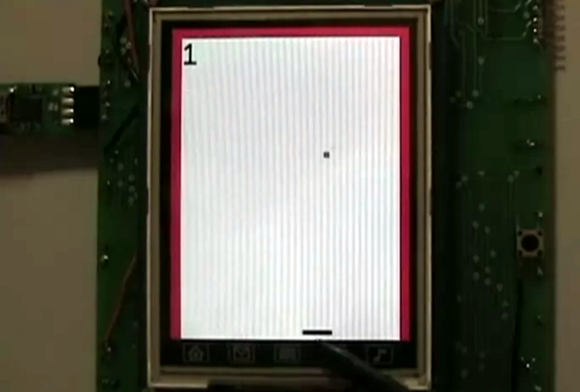
[Samir] dabbles in hobby electronics and decided to put his skills to the test by building this portable gaming console (Note: this site uses an HTTPS address which cannot be used through Google Tranlator. It does work for the Chrome browser translator). The image above is a screenshot from his Breakout-style game. The paddle at the bottom is controlled with the touchscreen. You move it back and forth to keep the ball from traveling past the bottom edge (it bounces off of the red borders on the sides and top).
The main PCB is larger than the 3.2″ LCD footprint, but [Samir] made sure to include a lot of peripherals to make up for it. The board sports a Parallax Propeller chip to run the games. It interfaces with the SSD1289 screen (this is a cheap and popular choice) but that really eats up a lot of the IO pins. To control the game the touchscreen can be used as we’ve already mentioned. But there are two other options as well. There is an expansion port which uses a shift register (74HC165) to serialize the input. For prototyping this allowed [Samir] to use an Atari joystick. He also rolled a Bluetooth adapter into the project which we would love to see working with a Wii remote. Rounding out the peripherals are an SD card slot, audio jack for sound, and an RTC chip for keeping time.
There are several videos included in the post linked above. After the break we’ve embedded the game-play demo from which this screenshot was taken.
http://hackaday.com/2013/01/28/porta...and-propeller/
To read more of the post and Download, click here!
 Join In and Discuss Here Join In and Discuss Here
Submit News and Releases Here and Contact Us for Reviews and Advertising Here |
|
 |
|
|
|
January 28th, 2013, 21:00 Posted By: wraggster
via http://www.romhacking.net/utilities/914/
FF4kster, the all-in-one editor for Final Fantasy 4 has been updated. Some bugs have been fixed, including some errors with some of the menus, as well as some bugs related to the saving of NPCs.
In addition, you can now edit the game’s dialogue. This includes all three dialogue banks, as well as the battle messages and status names.
Furthermore, two config files have been added: one for NPCs and one for NPC sprites.
As well, the program can now handle unheadered roms as well as headered ones (but can still only handle FF2US v1.1).
To read more of the post and Download, click here!
 Join In and Discuss Here Join In and Discuss Here
Submit News and Releases Here and Contact Us for Reviews and Advertising Here |
|
 |
|
|
|
January 28th, 2013, 20:50 Posted By: wraggster
via http://zx81.zx81.free.fr/serendipity...Cartridge.html
Hi all,
With my good friend Buzz, we have been working last past few months on a colecovision project called
31 in 1 : a home made cartridge with 31 games.

All the hardware part is well described on buzz web site, with schematcs and eagle files : here
Using the SDCC compiler and libraries and documentation of Daniel Bienvenu, i have written the loader part of this cartridge that let you choose the game you want using the pad.
All the source code is provided under BSD like license here :
31in1-rev2.zip
It contains also the eprom file i've used for this demo :

Finally this archive contains all files needed to build your own cartdridge (eagle files for the PCB etc ...)
If you are interested in making your own cartridge here is a model you can print :here

Good soldering,
Zx
To read more of the post and Download, click here!
 Join In and Discuss Here Join In and Discuss Here
Submit News and Releases Here and Contact Us for Reviews and Advertising Here |
|
 |
|
|
|
January 24th, 2013, 22:15 Posted By: wraggster
 Despite reports claiming that Tommo Inc's portable re-launch of the Neo Geo had ceased production, that is apparently not the case. "There has been a recent rumor about the end of the production of the NEOGEO X System. This rumor is incorrect," Tommo told us in a statement. The reports apparently stem from ending production of the Limited Edition Neo Geo X Gold System, which Tommo says, "was always planned to be a limited edition product." Beyond just continued production of the standard model, Tommo adds that it'll be supporting the device with, "more games, peripherals, and software updates." The Limited Edition, however, will likely start to disappear by some point in April, when the company expects final stock to begin shipping. "Given the popularity of the NEOGEO X format, we don't expect this stock to last long," the company notes. Head past the break for the full statement. Despite reports claiming that Tommo Inc's portable re-launch of the Neo Geo had ceased production, that is apparently not the case. "There has been a recent rumor about the end of the production of the NEOGEO X System. This rumor is incorrect," Tommo told us in a statement. The reports apparently stem from ending production of the Limited Edition Neo Geo X Gold System, which Tommo says, "was always planned to be a limited edition product." Beyond just continued production of the standard model, Tommo adds that it'll be supporting the device with, "more games, peripherals, and software updates." The Limited Edition, however, will likely start to disappear by some point in April, when the company expects final stock to begin shipping. "Given the popularity of the NEOGEO X format, we don't expect this stock to last long," the company notes. Head past the break for the full statement.
http://www.engadget.com/2013/01/24/n...in-production/
To read more of the post and Download, click here!
 Join In and Discuss Here Join In and Discuss Here
Submit News and Releases Here and Contact Us for Reviews and Advertising Here |
|
 |
|
|
|
January 23rd, 2013, 01:17 Posted By: wraggster
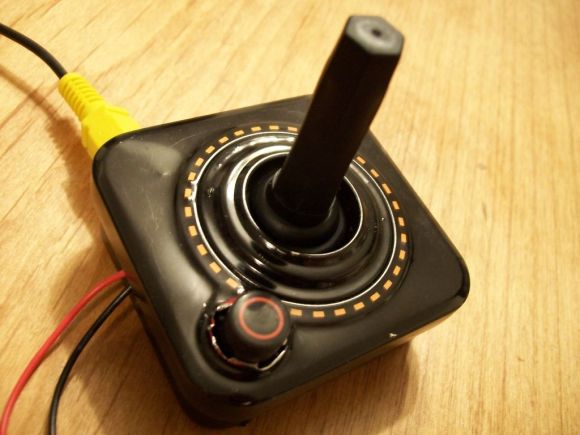
This original Atari controller is pretty small (take a look at that RCA cable for a sense of scale). Despite it’s size, [Kyle Brinkerhoff] managed to fit a complete gaming system inside the controller. This Pocket Sized Atari is a follow-up to another project he did called ArduPong which let him play Pong using a joystick and an Arduino. This rendition takes the external project box from that build and moves everything into one tight little package.
In the video after the break [Kyle] gives us a tour of the internals. The Arduino board he went with is an Ardweeny which is no bigger than the ATmega328 footprint so it can be easily mounted off to one side. The joystick internals have been replaced with the analog stick module from a PlayStation controller. That is where the button came from as well. Just connect this to a 9V battery and the composite video input of a TV and you’re ready to do some gaming!
Now if you just want that retro look for your Xbox Live games check out this Xbox 360 controller in an Atari joystick.
http://hackaday.com/2013/01/22/gamin...tari-joystick/
To read more of the post and Download, click here!
 Join In and Discuss Here Join In and Discuss Here
Submit News and Releases Here and Contact Us for Reviews and Advertising Here |
|
 |
|
|
|
January 21st, 2013, 22:31 Posted By: wraggster
The US operations of the iconic video game maker has filed for bankruptcy in a bid to break free from its French parent company.
Atari and three of its affiliates filed petitions for Chapter 11 reorganization in US Bankruptcy Court in New York this weekend.
“The Chapter 11 process constitutes the most strategic option for Atari’s US operations, as they look to preserve their inherent value and unlock revenue potential unrealized while under the control of Atari SA During this period, the company expects to conduct its normal business operations,” the company’s announcement reads.
The long-standing developer and publisher has secured $5.25m of debtor-in-possession financing to continue operations while proceedings move forward.
The company is selling all of its assets, including Pong, Asteroids, Missile Command, and Tempest.
http://www.pcr-online.biz/news/read/...kruptcy/030043
To read more of the post and Download, click here!
 Join In and Discuss Here Join In and Discuss Here
Submit News and Releases Here and Contact Us for Reviews and Advertising Here |
|
 |
|
|
|
January 16th, 2013, 23:46 Posted By: wraggster

[Hoogen] did a fantastic job of building arcade hardware into this Ikea coffee table. Sound familiar? We just looked at another Ikea coffee table arcade, but this one goes quite a different route. It uses a Ramvik table which has a very deep drawer in the end where the controls are located. The image to the left shows that you’re going to have a problem with the joystick when you try to close it. [Hoogen] came up with a clever mechanism to overcome this issue.
This is not an emulated system. It uses a JAMMA board called the iCade 60-in-1 to bring sixty classic arcade games to the build. To interface with this hardware [Hoogen] included a JAMMA full cabinet wiring harness. The inset image on the right is pretty small, but it shows the speaker mounted in the back of the drawer, as well as the control surface angled down. This tilting surface is what allows the controls to move out of the way when closing the drawer. This happens automatically as described by [Hoogen] in his write-up.
http://hackaday.com/2013/01/16/coffe...-its-controls/
To read more of the post and Download, click here!
 Join In and Discuss Here Join In and Discuss Here
Submit News and Releases Here and Contact Us for Reviews and Advertising Here |
|
 |
|
|
|
January 15th, 2013, 23:43 Posted By: wraggster
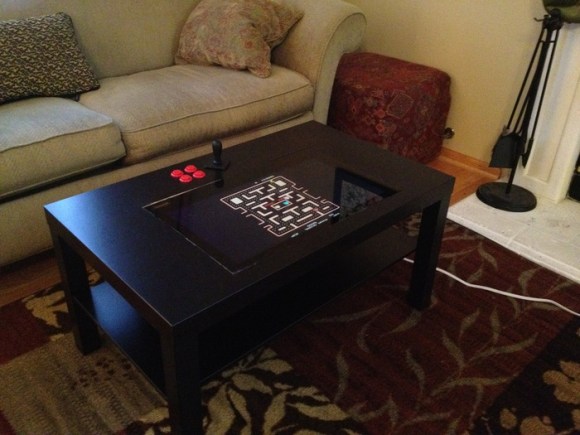
Get some Pac-Man fever while sitting on this couch thanks to the arcade rig built inside of the coffee table. The controls are a bit more sparse than more dedicated MAME rigs, but you should still be able to play most of the classics with four buttons and a joystick. After all, you need to reserve some room to put your feet up when you’re not gaming.
[Manny Flores] started the project with a Lack table from Ikea. The top is anything but solid. After tracing the outline of his LCD screen and cutting through the surface he discovered this is more of a beefed of cardboard than it is wood. The honeycomb of paperboard inside the surface of the table makes it really easy to clear out some space. In fact, when it came time to add the arcade buttons he just used a utility knife to cut the openings. Inside you’ll find a Raspberry Pi which interfaces with the buttons and joystick via an iPac USB controller board. A set of powered speakers mounted on the underside complete the design.
http://hackaday.com/2013/01/15/coffe...rcade-cabinet/
To read more of the post and Download, click here!
 Join In and Discuss Here Join In and Discuss Here
Submit News and Releases Here and Contact Us for Reviews and Advertising Here |
|
 |
|
|
« prev
60
61
62
63
64
65
66
67
68
69
70
71
72
73
74
75
76
77
78
79
80
next » |




 Doom's original design called for four players on a quest to rescue their friend
Doom's original design called for four players on a quest to rescue their friend Doom's HUD went through several iterations, getting progressively leaner in line with the trimmed down design
Doom's HUD went through several iterations, getting progressively leaner in line with the trimmed down design



 Despite reports claiming that Tommo Inc's portable
Despite reports claiming that Tommo Inc's portable 

